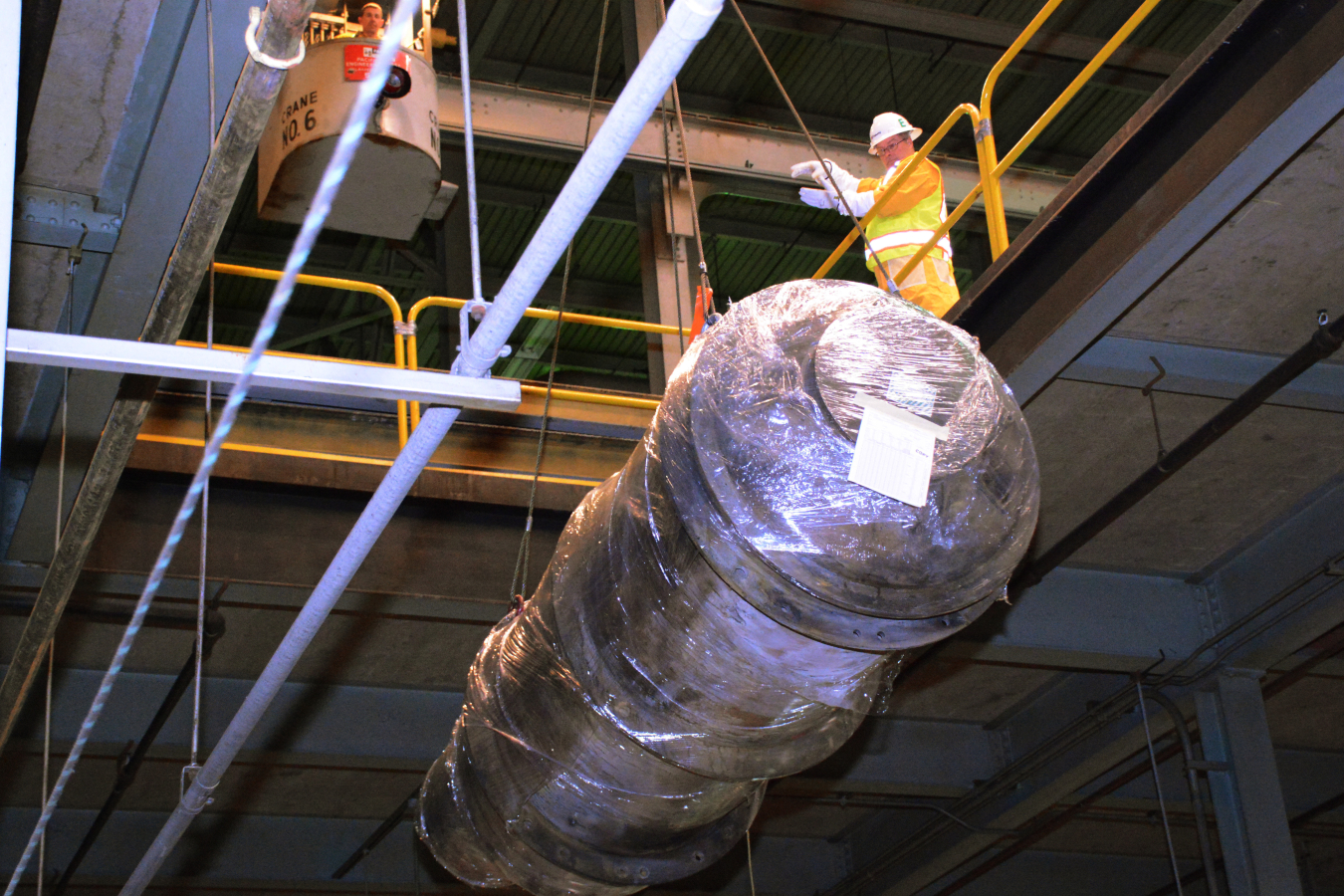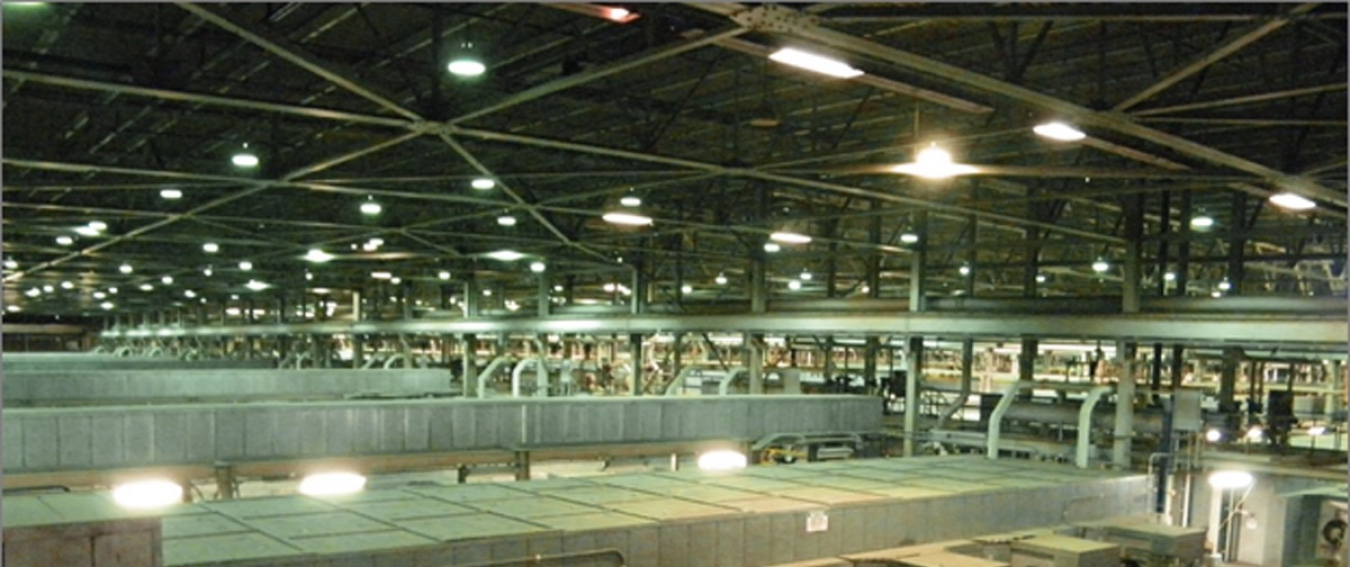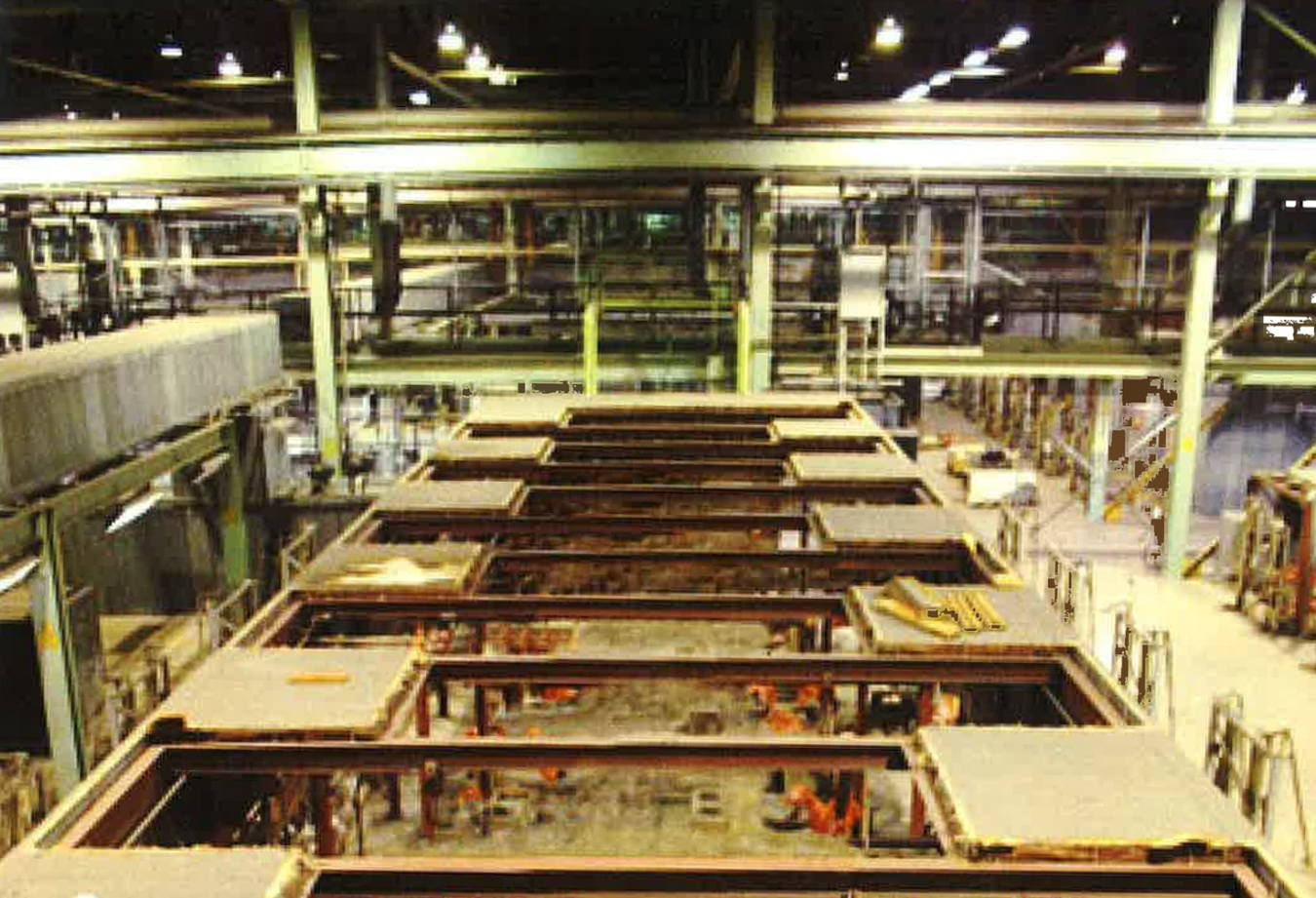PIKE COUNTY, Ohio – The U.S. Department of Energy (DOE) recently met a significant milestone in the Portsmouth Site (PORTS) deactivation effort by removing the final component of process gas equipment (PGE) from the cell floor of the X-326 facility. The X-326 is one of three, 30-plus-acre buildings that were used in the uranium enrichment process when the gaseous diffusion plant was in operation.
The DOE contractor for the PORTS Decontamination and Decommissioning (D&D) Project, Fluor-BWXT Portsmouth, completed removing the more than 7,000 components on March 21, 2016. The components were part of a complex system containing 2,340 “stages,” each consisting of a compressor, a converter, and a cooler, and miles of interconnecting piping. The converters weighed almost five tons each. Work to carefully remove components of this system was initiated while portions of the system were still operating to reduce uranium “hold-up” material, or residues inside the enrichment cascade.
To take on this huge task the X-326 Deactivation team staffed up to 300 employees and support staff working 24 hours a day, seven days a week. Specialized training, rigorous radiological controls and strict conduct of operations compliance were needed to ensure these workers, who were cutting out components, removing them from the system and installing metal caps, could do so safely from a radiological, industrial hygiene and safety perspective.
“There have been many challenges, all of which were met, while safely performing this difficult and hazardous work,” said DOE Site Lead Joel Bradburne. “The Fluor-BWXT X-326 Deactivation team has removed the largest sources of contamination and safely shipped these components offsite for disposal. In the process the Portsmouth D&D Project has become one of the largest shippers in the DOE complex for offsite disposal.”
This deactivation work involved the typical hazards associated with uranium hexafluoride processing systems and equipment including chemical hazards like hydrofluoric acid and radiological contamination issues, but it also involved significant hoisting and rigging, “hot work” (welding and torch cutting), and work in confined spaces, all while wearing fully encapsulating personnel protective equipment and respiratory protection.
“The removal of more than 7,000 components brings us to another step in DOE’s mission to safely D&D the process buildings and clean up the site,” said Dr. Vince Adams, DOE site director. “Dismantling the enrichment cascade and support systems, and preparing this massive structure for demolition after more than 60 years of service, is an ongoing concerted effort requiring remarkable planning and implementation. We look forward to the continued cleanup efforts under way for this community’s future.”
The X-326 deactivation work now continues with characterizing auxiliary systems and removing held-up uranium and hazardous materials in those systems. “Our plan is to have the X-326 ‘cold and dark’ and ready for demolition by June of 2017,” Bradburne said.
The Department recently approved a 30-month contract option for Fluor-BWXT to finalize X-326 deactivation, fully mobilize deactivation efforts in the X-333 building, and finish design and begin construction on an On-site Waste Disposal Facility to safely dispose building debris and contaminated soils from plant demolition.
#DOE#



